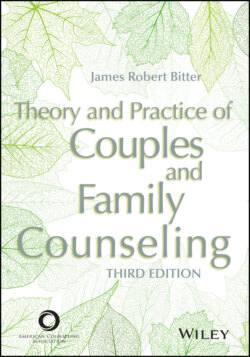Читать книгу Theory and Practice of Couples and Family Counseling - James Robert Bitter - Страница 53
The Milan Model
ОглавлениеAnother strategic family center was located in Milan, Italy. The initial counseling team included Mara Selvini Palazzoli, Luigi Boscolo, Gianfranco Cecchin, and Guiliana Prata (1978). This team was influenced by the writings of Gregory Bateson and the training methods of Jay Haley. Using a team approach similar to the Haley-Madanes model, one of the therapists would conduct an extended interview with a troubled family. The interviewer would rely primarily on circular or relational questions: for example, “When you initiated a fight with your mother, who in the family was most upset by it?” or “Who is closer to your father, your daughter or your son?” Observing team members would watch family processes for games, rituals, and family transactions that seemed to present themselves in counseling paradoxically; that is, the family came to change, but everything they did seemed to be aimed at keeping family processes just as they were. The job of the observing team members was to prescribe a counterparadoxical intervention aimed at changing family process by telling family members to stay just the same. In addition to counterparadoxes, the Milan group would use hypothesizing and reframing through positive connotations to move the family along in the change process.
The original team separated in 1980. Boscolo and Cecchin would stick with their original model and spend the next quarter century refining the process. Selvini Palazzoli and Prata formed a separate group and for a couple of years experimented with what they would call the invariant prescription. The invariant prescription was given to all families that were seen: “We would like the two of you as a couple to go out for the evening, not tell your children where you are going or when you will be back, and leave them to handle life themselves while you have a good time.” This directive to the family had the clear goal of strengthening the bond between the parents and breaking up the parent-child coalitions that were responsible for maintaining the family’s games. By 1982, however, Selvini Palazzoli lost interest in the invariant prescription, and she and Prata also split up. Selvini Palazzoli would spend the last decade of her career working with clients in long-term, insight-oriented counseling.
